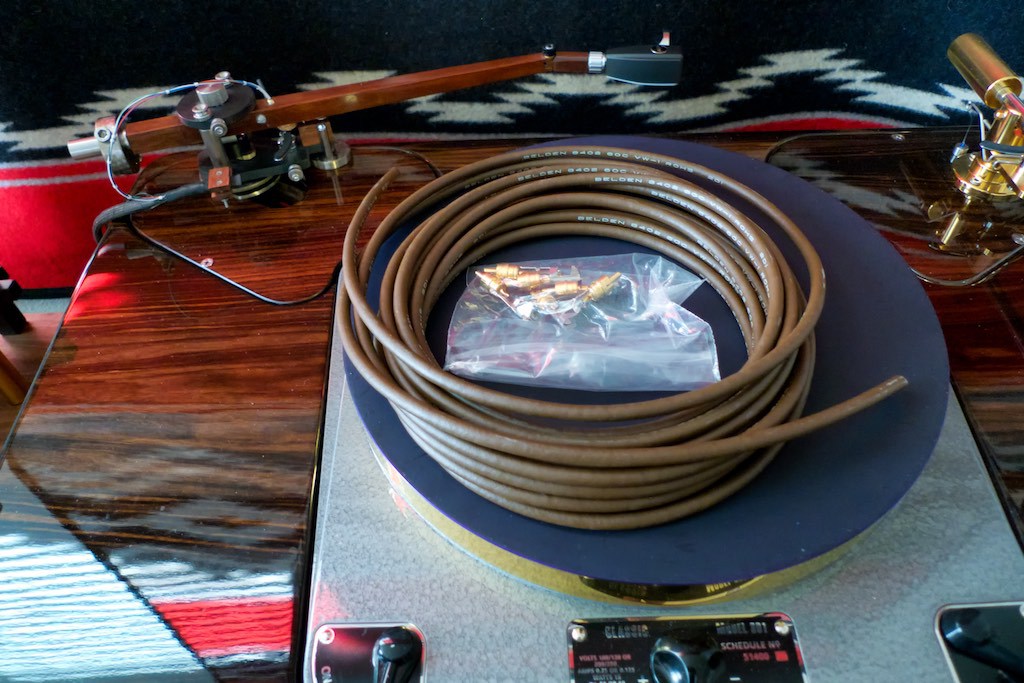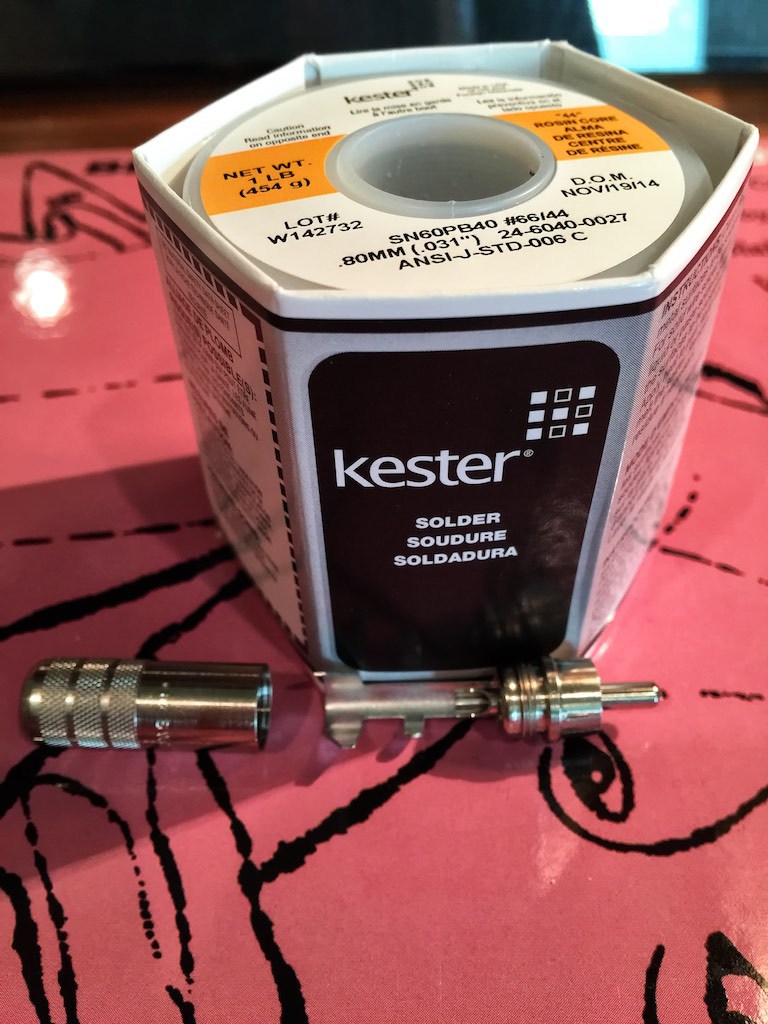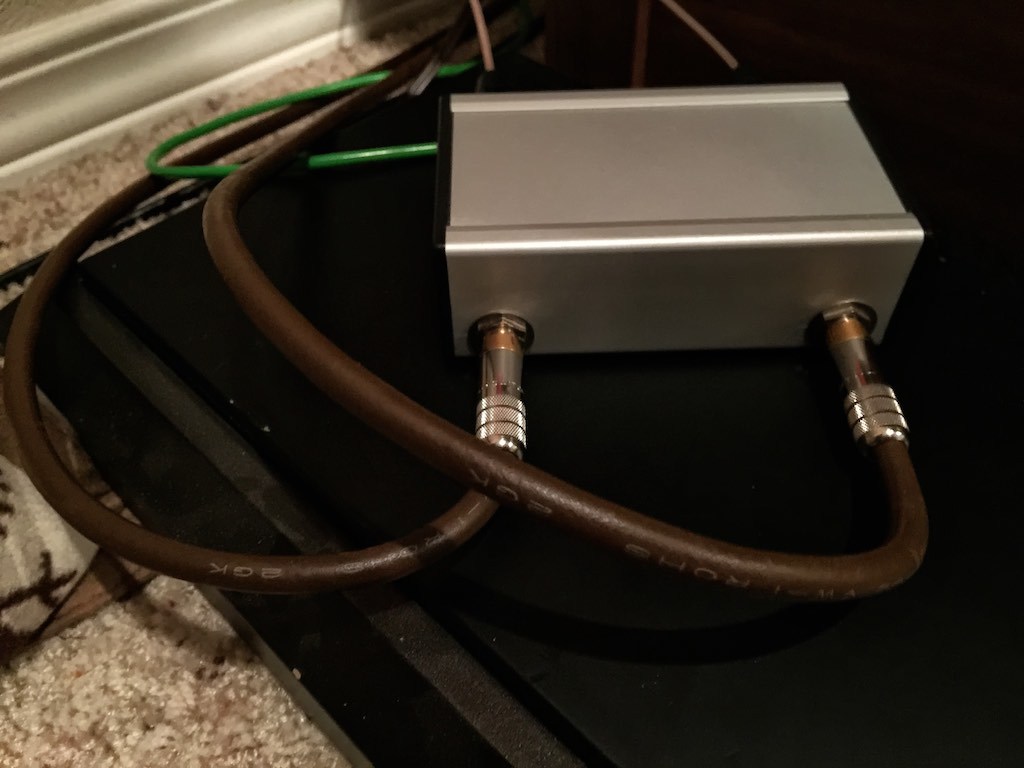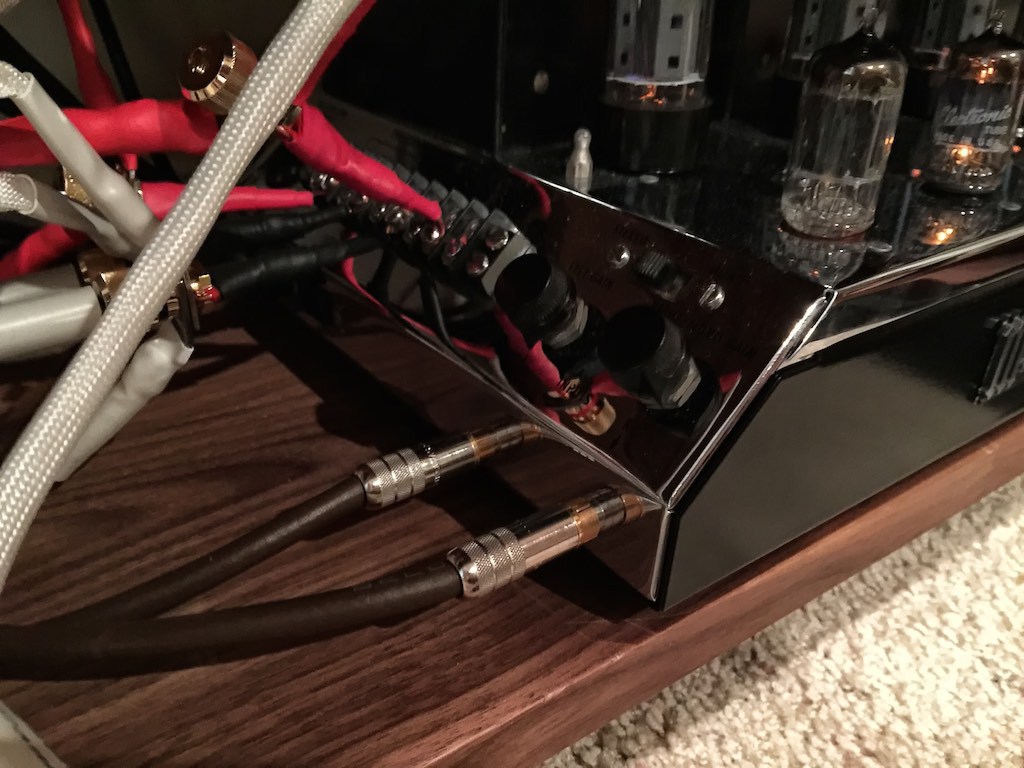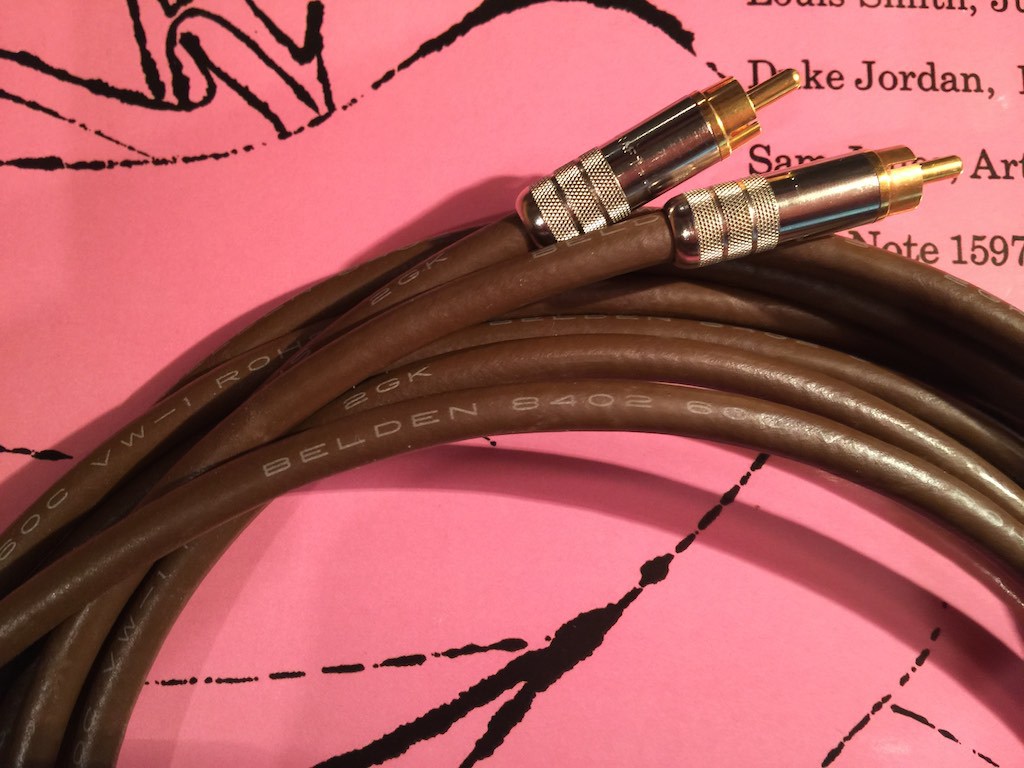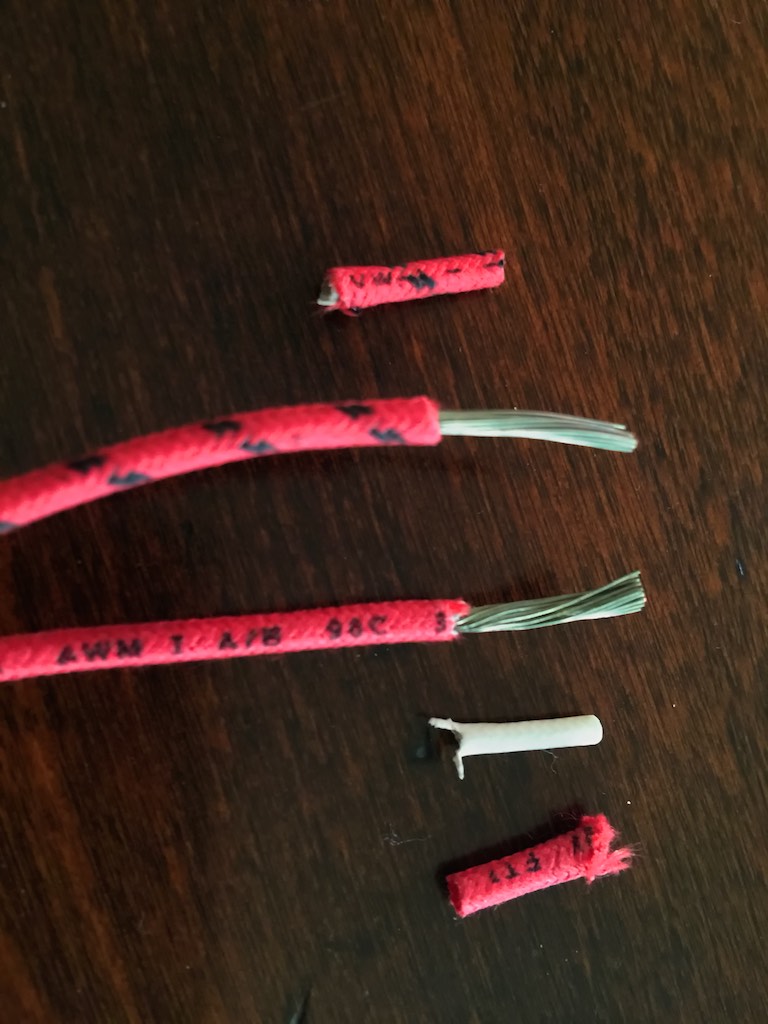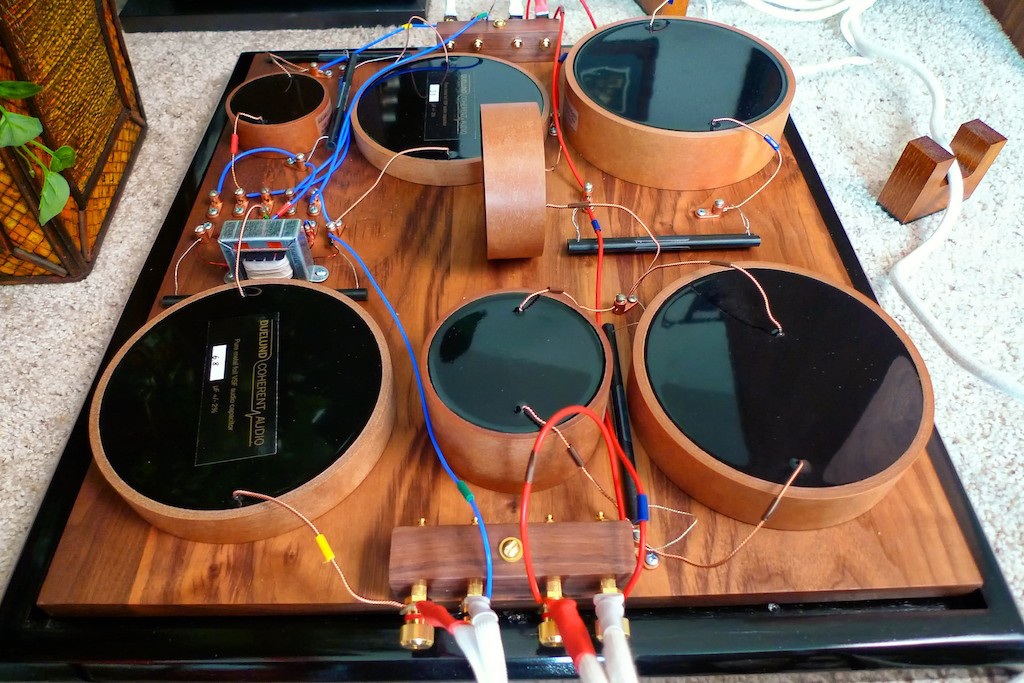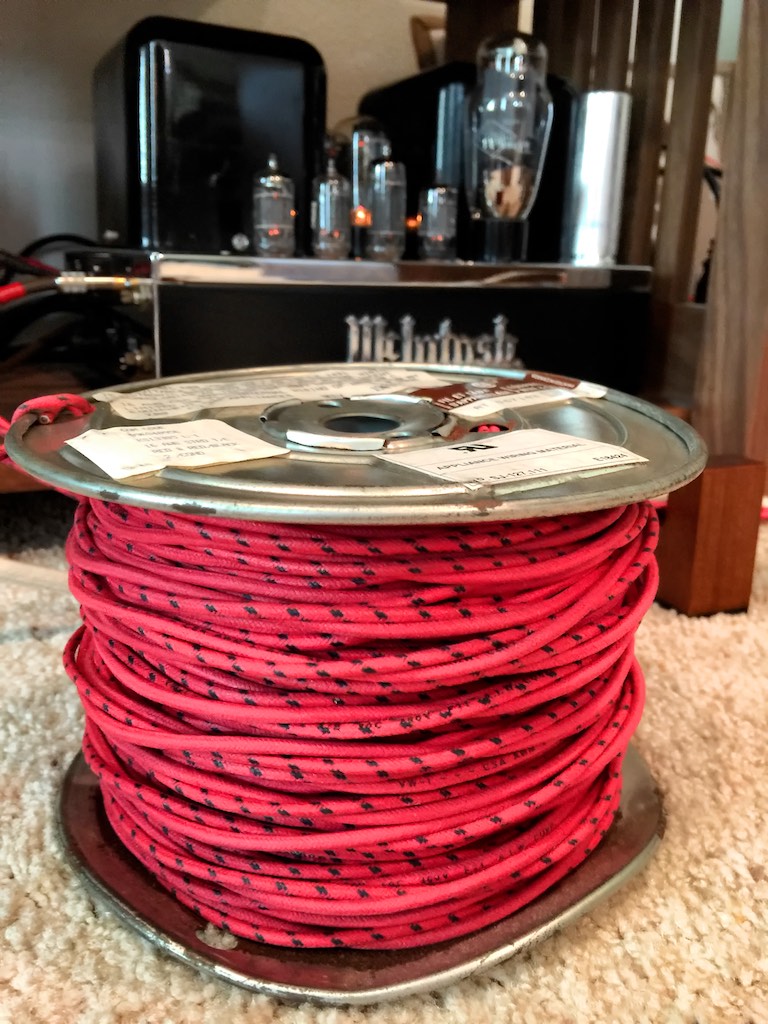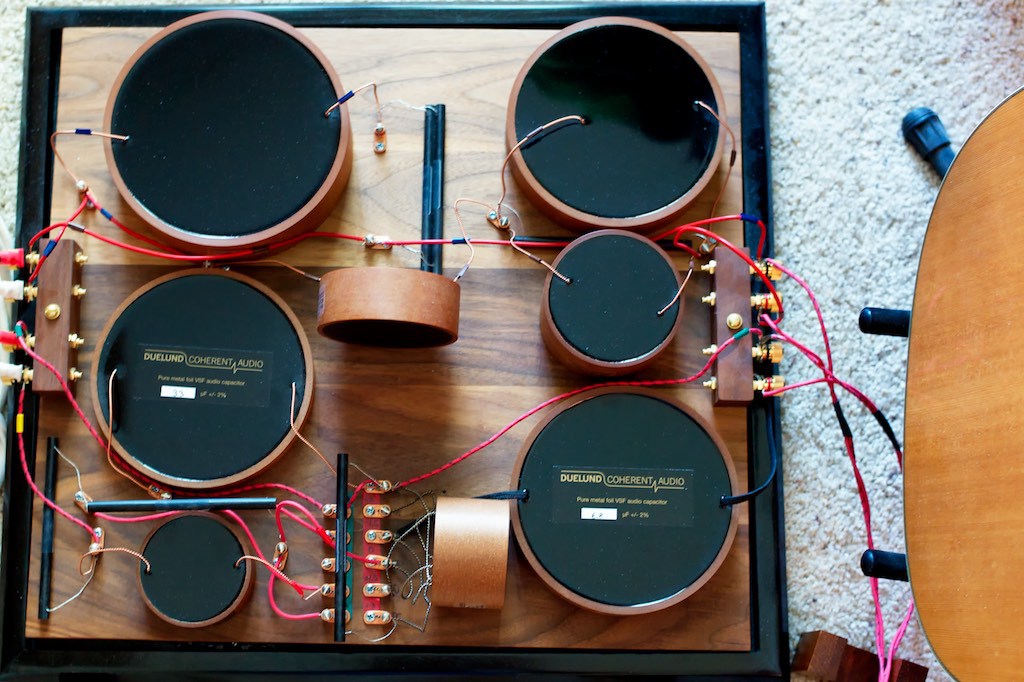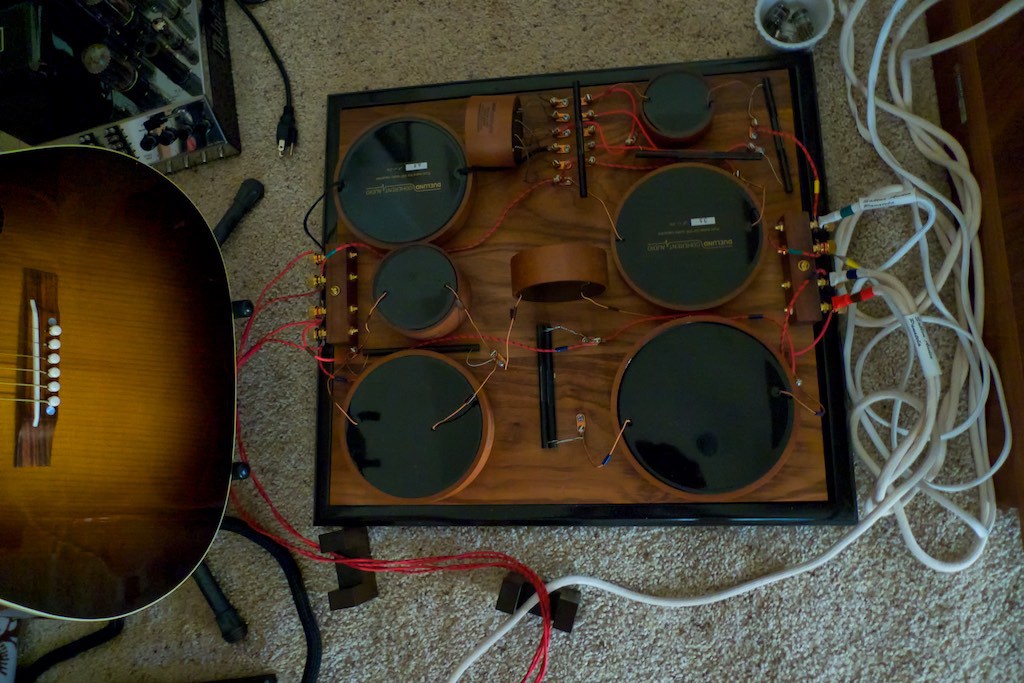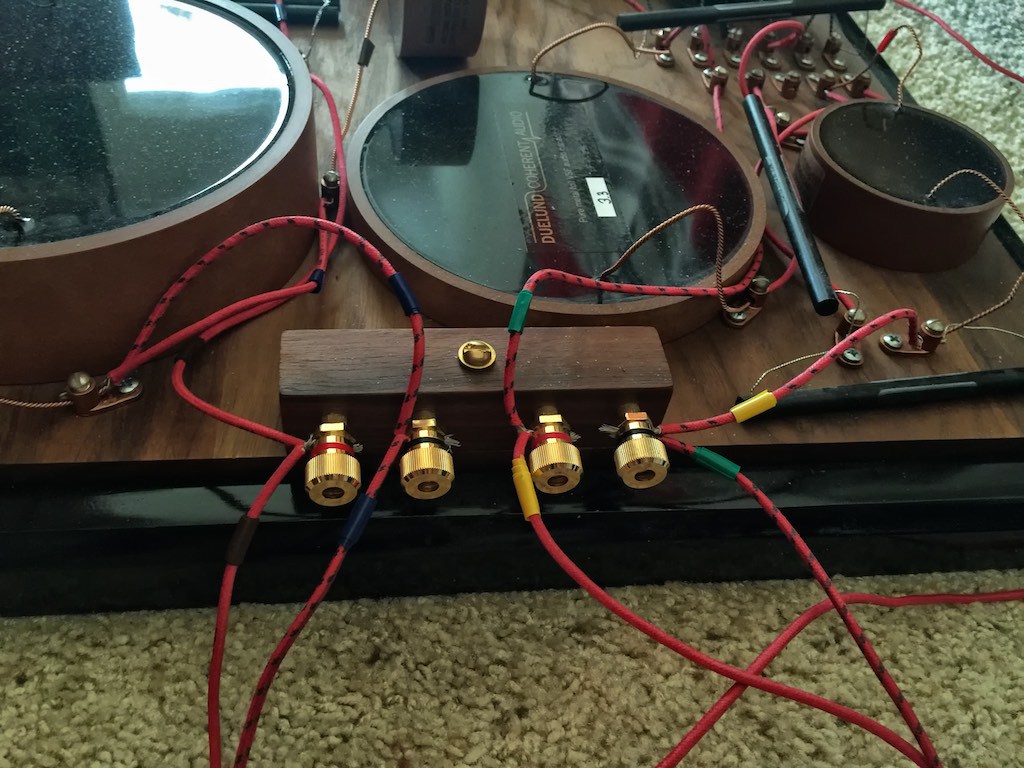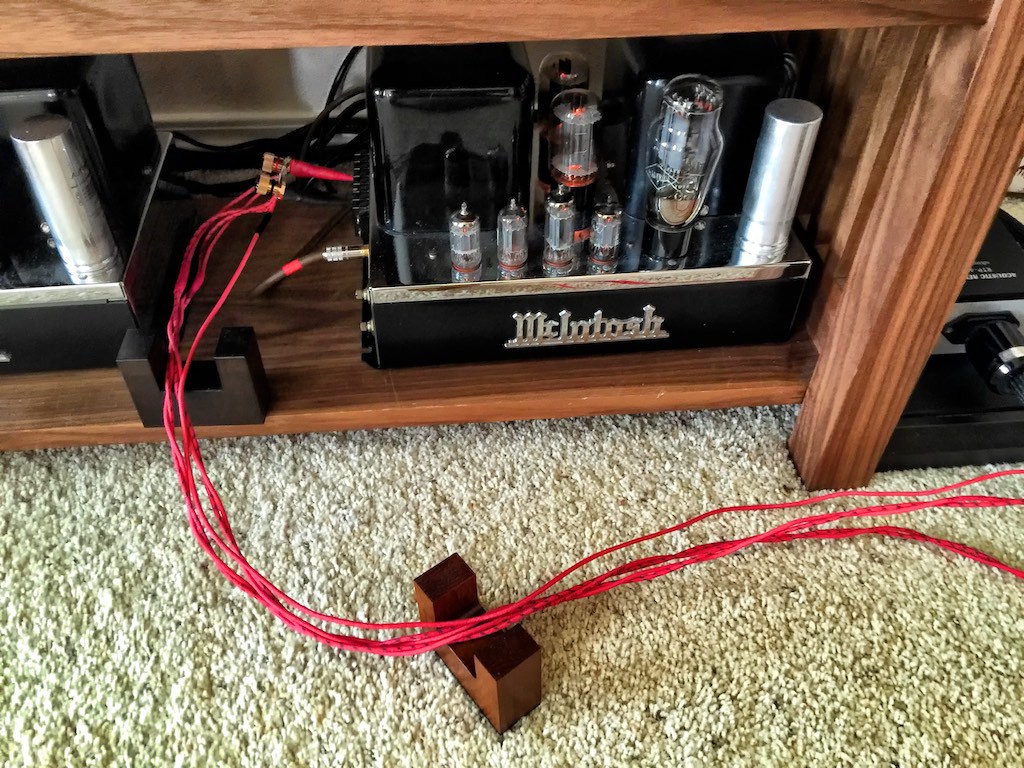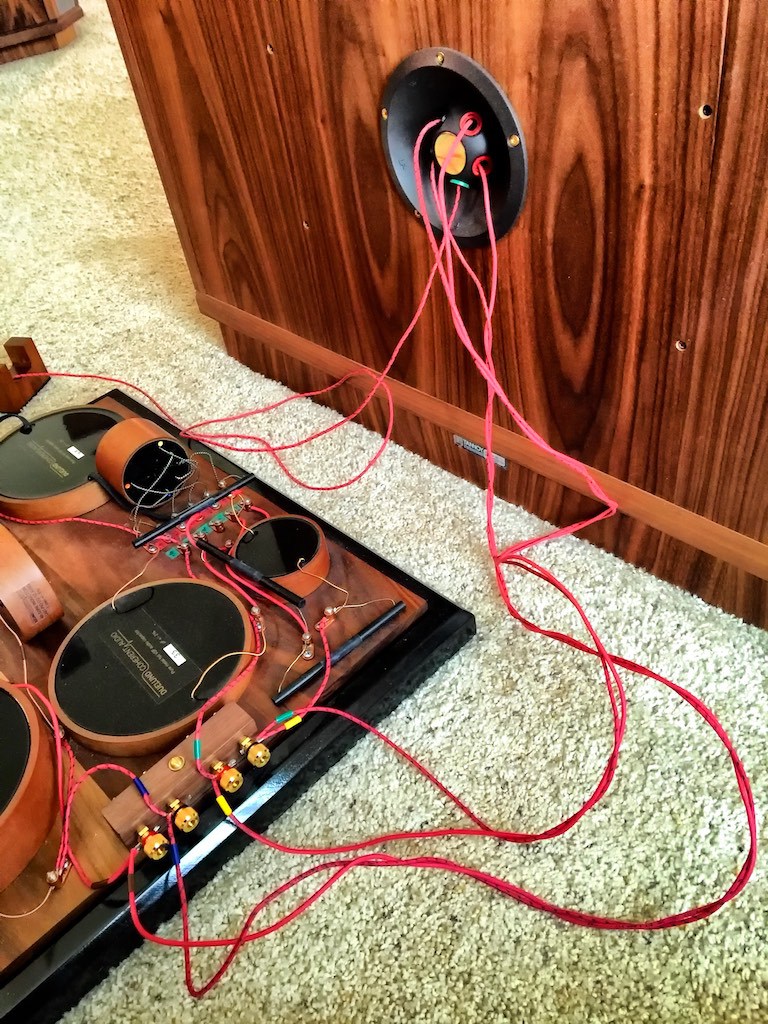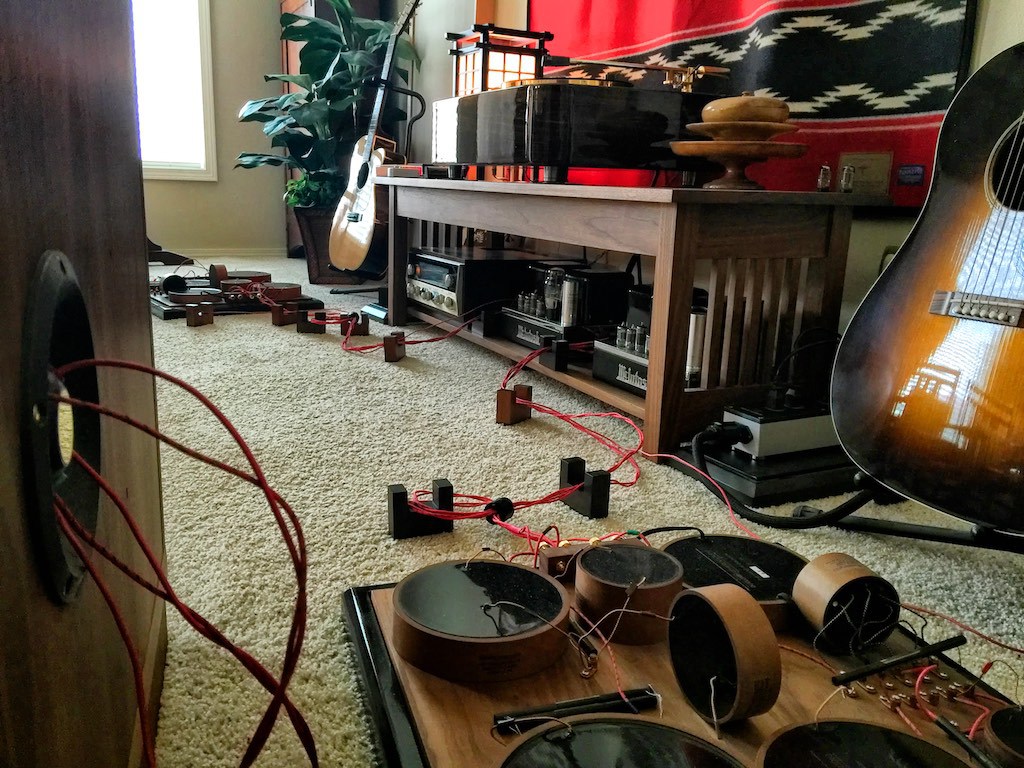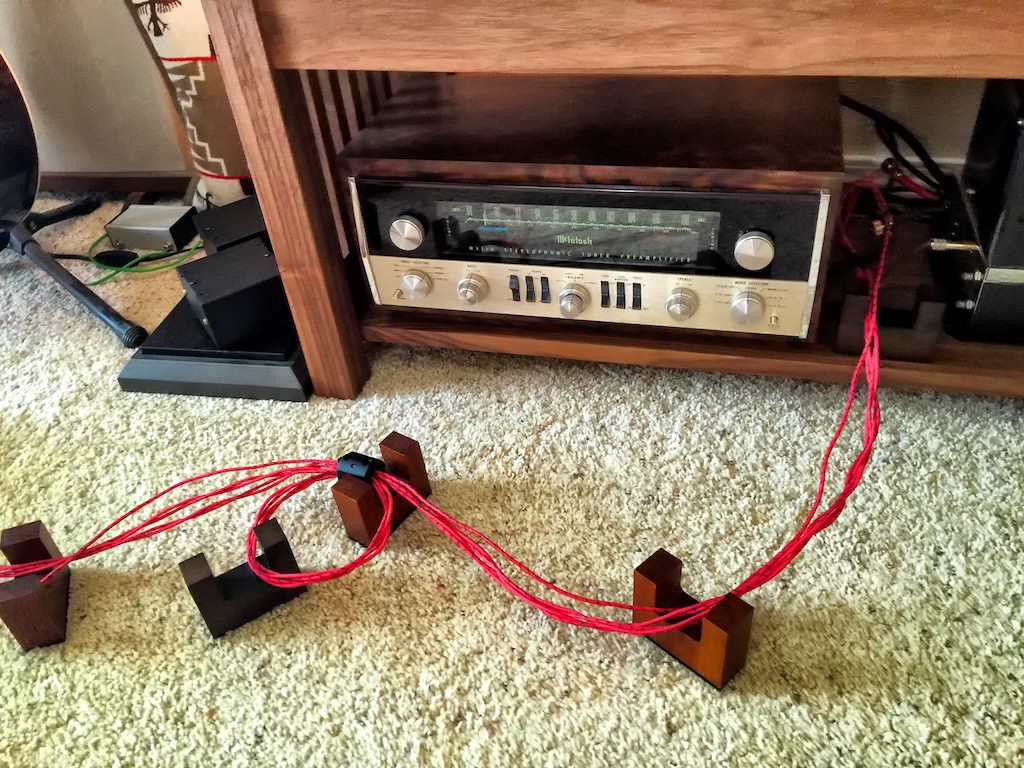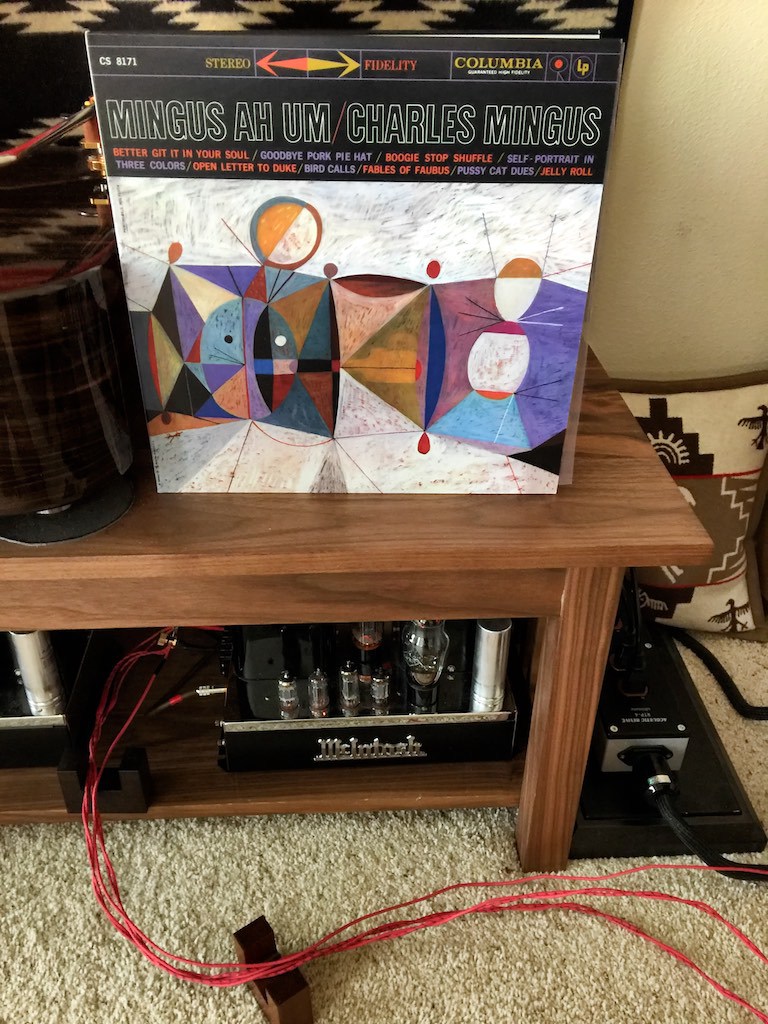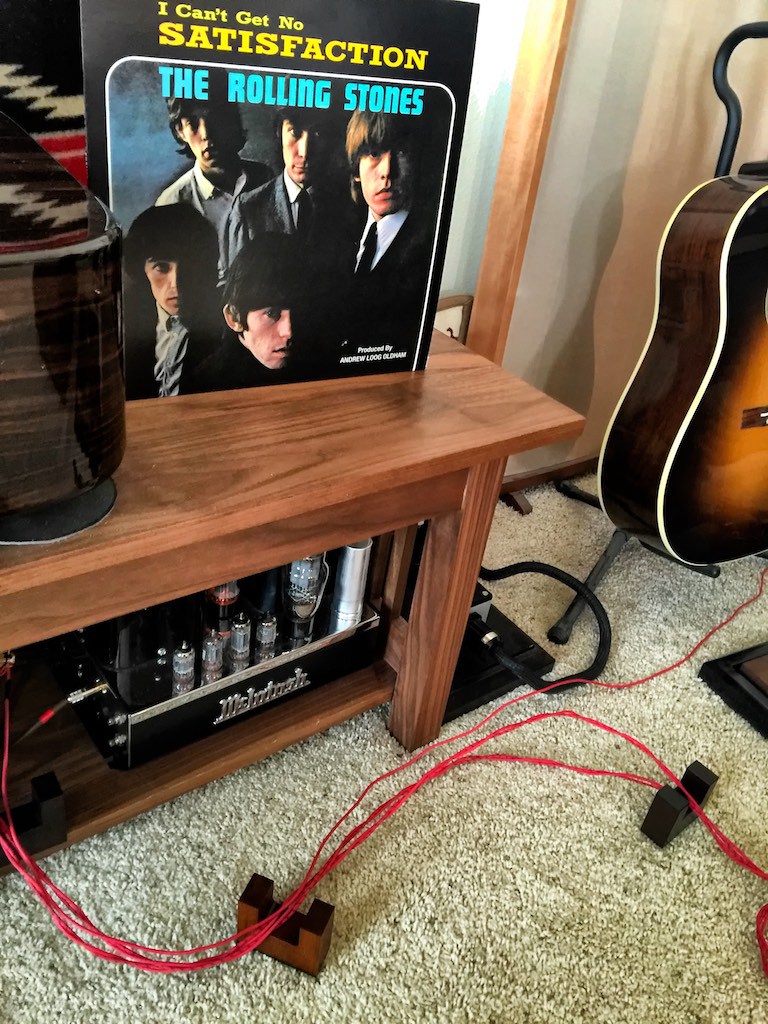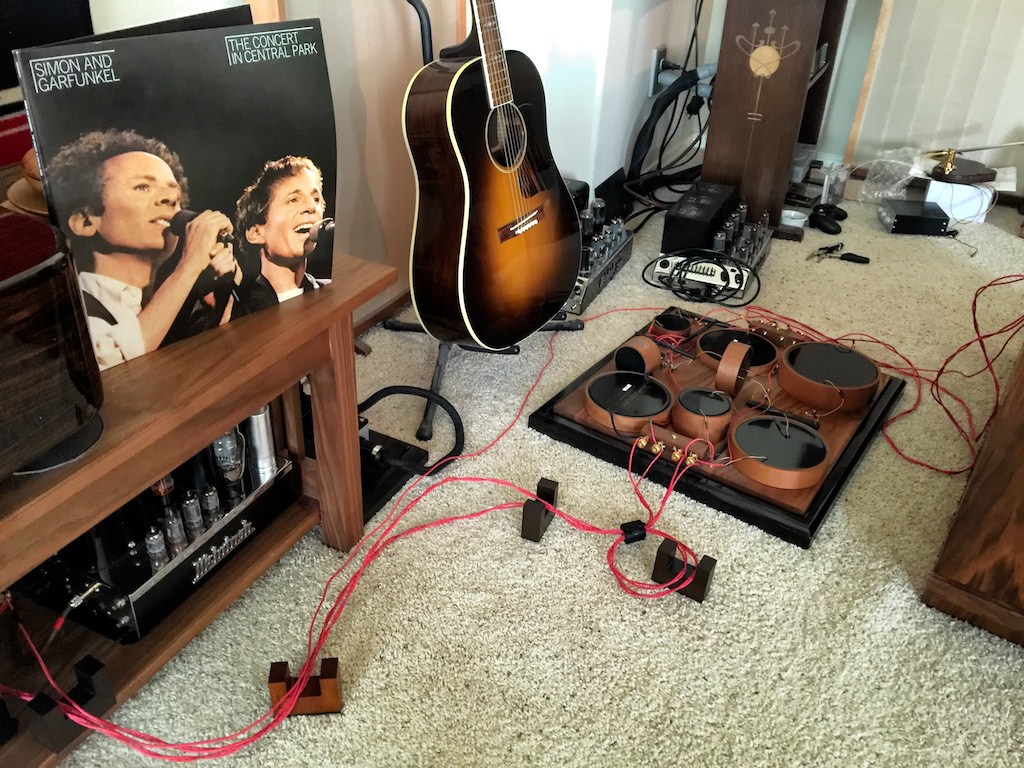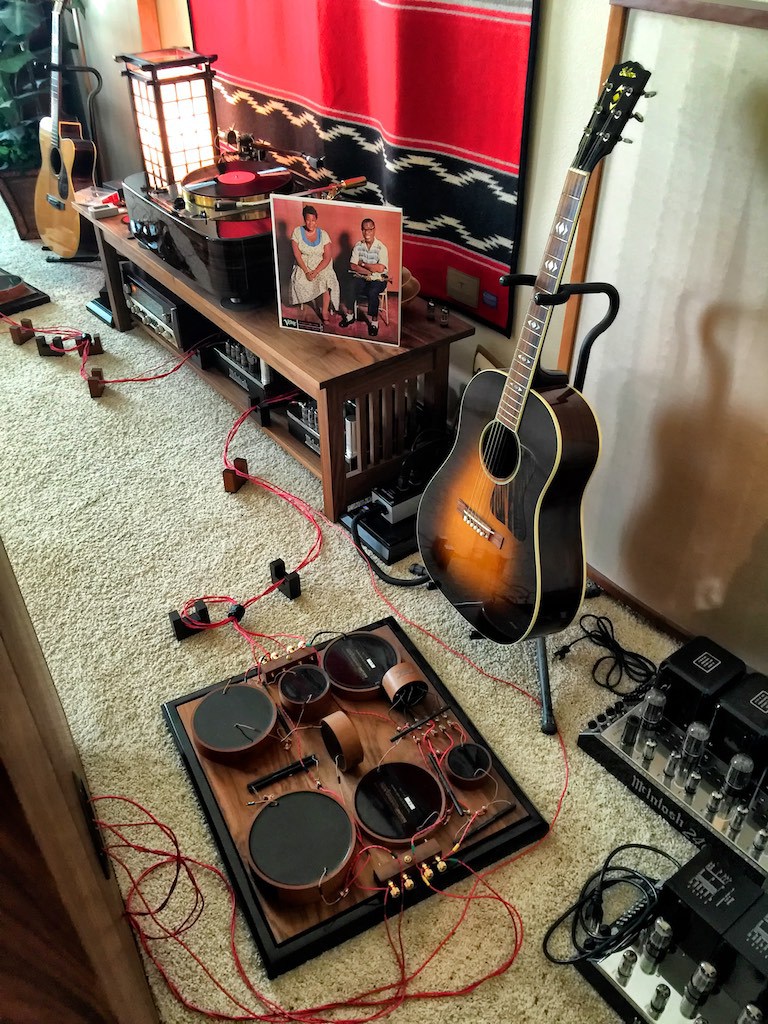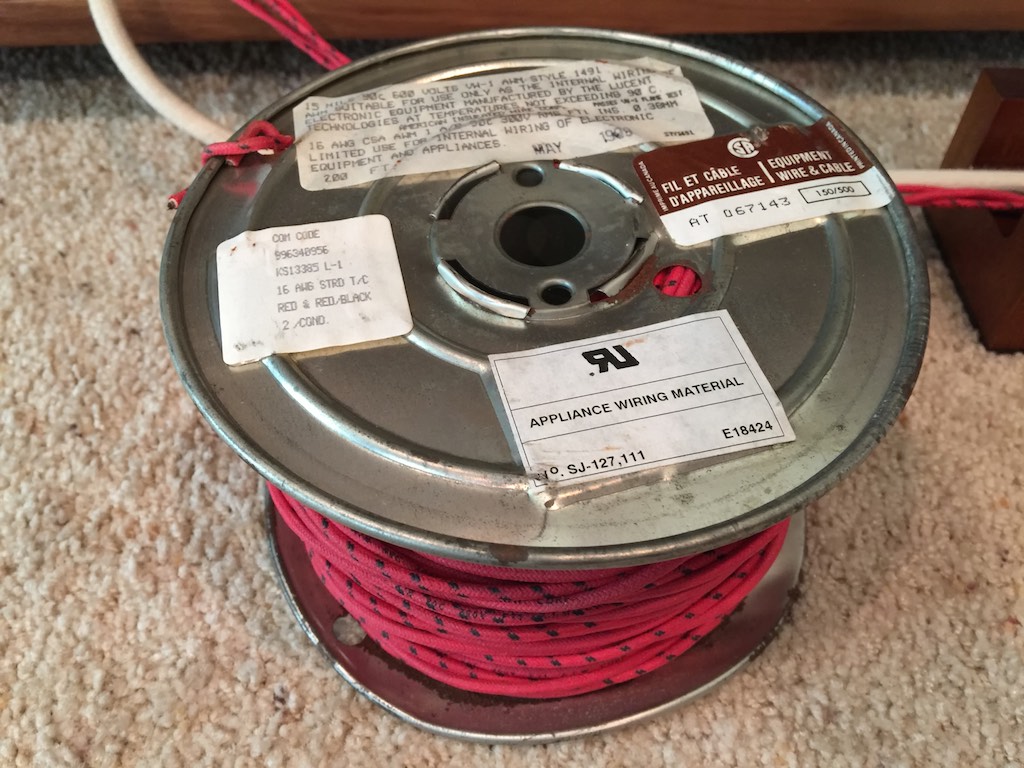A couple of posts ago (here) I shared a little of the article Adventures in Real Sound With Mr. Shirokazu Yazaki that I am writing for Positive Feedback.
I've been making good progress on the article, and I am hoping to be able to finish it this weekend, so it can get published before next week's Rocky Mountain Audio Fest in Denver, Colorado, where you'll be able to meet Yazaki-san in Jonathan Halpern's Tone Imports room.
Here's another little sneak peek continued from my previous post:
The Vintage Beat: Belden 8402 Microphone Cable Interconnects
While I was conversing with Yazaki-san while writing the SPEC RSA-M3 EX Real Sound Amplifier article for Positive Feedback Online, he told me about two vintage American cables that he was very impressed with, and has been using at international audio shows to demonstrate his SPEC audio electronics, one of which was the nuevo-vintage Belden 8402 microphone cable used as RCA interconnects (I say nuevo-vintage, because unlike most vintage products which are no longer available, you can still buy Belden 8402 brand new off the spool).
Yazaki-san crafted two pairs of Belden 8402 microphone cable into RCA interconnects for me to try in my system: one 0.75 meter pair to use with my phono cartridge step-up transformer (SUT), and one 2-meter pair to use from my restore vintage McIntosh MX110Z preamplifier to my restored vintage McIntosh MC225 & MC240 stereo amplifiers, or restored vintage McIntosh MC30 mono amplifiers, as the case may be.
Yazaki-san built the Belden 8402 microphone cable interconnects using Switchcraft SWC-3502AAU RCAs and Kester 44 solder, which coincidentally created an All-American vintage-style cable! I thought the gold plated pin & plug housing with nickel handle of the Switchcraft SWC-3502AAU RCAs made for a very attractive combination with the brown Belden 8402 microphone cable.
The Belden 8402 microphone cable is a two conductor low-impedance cable, which Belden describes as “20 AWG stranded (26×34) high-conductivity tinned copper (TC) conductors, EPDM rubber insulation, rayon braid, TC braid shield (85% coverage), cotton wrap, CSPE – Brown Chlorosulphonated Polyethylene jacket”.
Yazaki-san constructs the Belden 8402 microphone cable interconnects like this:
One conductor goes to the RCA pins (hot), the other conductor goes to the plug housings (ground), and the shield is connected at each end to the ground.
This is a little different connection method than is traditional here in the USA, where the norm is to connect one conductor to hot (pins), one conductor to ground (plug housings), and connect the shield only on one end (normally the source end) to the ground. Yazaki-san’s Belden 8402 microphone cable interconnects worked beautifully in my system.
Think about this for a moment: It turns out that back in the day that Belden 8402 was the choice for microphone cables in a fair number of recording studios (and other pro-audio applications), so there’s a reasonable chance that for your beloved recordings, the live music went to the microphone, down the Belden 8402 microphone cable, and onto the master tape. Part of what you and I associate with ‘the master tape sound’ is unsurprisingly the sonic characteristics of Belden 8402 microphone cable.
Yazaki-san’s Belden 8402 microphone cable RCA interconnects arrived the very same day that my audio pals Leo, Pete, Ron, and Stephaen were coming over for some audio fun & games. Leo, Pete, Ron, Stephaen, and I played a bunch of different mono & stereo records and had a general blast listening to music.
So how did the Belden 8402 microphone cable fare as an RCA interconnect? Fantastic! Even with zero time on them, straight out of the package from Tokyo, they performed amazingly well. Smooth and natural, timbrally realistic, beautiful tone color, and terrific musicality. Yazaki-san regards the Belden 8402 microphone cable “as some kind of ultimate” and I wouldn’t disagree.
I should mention also that when Yazaki-san speaks of the Belden 8402 “as some kind of ultimate” he is speaking of it in terms of the ‘Real Sound’ context, related to its ability to sound rich & natural, timbrally realistic, with beautiful tone color & musicality, and a high level of emotional involvement, rather than in more typical audiophile terms of transparency, resolution, neutrality, and the like.
Take for example the handcrafted Sablon Audio Panatela interconnects that are my reference: they are more transparent, resolving, and neutral than the Belden 8402, while still being smooth & musical. Most people are blown away when they hear the Panatela for the first time, and for good reason, they’re superb.
When listening to both interconnects, my friends Leo, Pete, Ron, and Stephaen, who normally perceive things quite similarly performance-wise, were evenly divided about which interconnect they thought had the best performance, with half favoring the Belden 8402, and half the Panatela.
Those who have been following my articles here at Positive Feedback know that the Panatela is a true high-performance interconnect in contemporary audio terms, doing everything sonically & musically, extremely well, and the Panatela has been my favorite interconnect for a long time.
So what is going on here with the Belden 8402 versus the Panatela? The Belden 8402 has more of a ‘vintage’ tonal balance, with less pronounced high & low frequencies, a superbly rich & colorful mid-range, a more timbrally ‘textured’ presentation, as well as providing an almost indescribable & uncanny emotional connection to the music.
I’ve got some bad news: the Belden 8402 is non-existent in the USA from the normal audio outlets. Sorry about that. You can find it from a few pro-audio providers, but Belden sells it in studio relevant 500-feet spools as a minimum order, so it’s hard to find shorter lengths.
So you’re probably wondering how much it would cost to build a 1-meter pair of interconnects using Belden 8402. Well, about a $1000 USD. Kidding! Belden 8402 sells for about $2.75 USD per foot or less, depending where you buy it. So it’ll cost you less than $50 USD to build a 1-meter pair of interconnects. It is an incredible bargain.
I searched high and low for someone who sells it by the foot here in the US, and I found one pro-audio supplier that was willing to sell it by the foot (10-feet minimum order), Best-Tronics Pro Audio in Tinley Park, Illinois, and they’ll even assemble it into interconnects using Switchcraft SWC-3502AAU RCAs for a modest price, if you ask them nicely. Here’s a link to their Belden 8402 page where you can buy it by the foot.
Here are a couple of comments from readers & friends about their experiences with the Belden 8402 microphone cable interconnects:
“… we tried fifteen foot Belden 8402 interconnects made per Yazaki San specs (shield connected to negative wire on both ends) to connect my modified Wright line stage to the Beveridge Model 2SW speakers. Wow! Though the Beveridges have always sounded wonderful with the nondescript 25 foot coax RCA interconnects I had been using, the Belden 8402 interconnects gave the Beveridges a not-before-heard transparency, much better dynamics, and lovely non-clinical highs. What surprised me more than anything else was that with the Belden 8402 going to the Beveridges, my first impression was that the dynamics and highs of the Beveridges seemed to exceed the dynamics and highs of my Po’ Boy horns, and in a completely non-clinical way.” (Pete Riggle)
“I just rolled another pair of these wonderful Belden interconnects to use between my Sony ES SACD/CD player and my ARC LS7 line stage, and I have to say the improvements in the sound quality are commensurate with what I hear with these cables between my ARC PH5 phono stage and LS7 line stage, and from the line stage to my power amps. The sound is richer harmonically, the soundstage is larger in all three dimensions and the tonality is spot on.” (Rich Hing)
The Vintage Beat II: Western Electric WE16GA
The second vintage wire that Yazaki-san recommended to me was Western Electric WE16GA, which in true vintage fashion is no longer made, and is getting harder to come by every day as word is getting out about its incredible performance.
The Western Electric part number for the WE16GA was KS13385L-1, and the American Insulated Wire Corporation produced it for Western Electric. Yazaki-san told me that the Western Electric WE16GA is “ …16 gauge, with a simple structure, old primitively processed copper wire, with unexceptional tin plating …” and that it “… might be the best or most natural for our hearing as an audio speaker cable …”
Both the Belden 8402 and Western Electric WE16GA share in common a stranded, tin-coated, copper conductor. The WE16GA adds a cloth covering over an inner polymer sleeve. Neither seems particularly ‘special’ when you look at them, but they are tasteful looking, and of course they sound extremely musical. (Hint: If you’re someone in the position to make it happen, a modern reproduction of the Western Electric WE16GA would be a great contribution to audio, and would likely fly off the shelves if priced morally.)
Yazaki-san sent me enough of Western Electric WE16GA wire to make a full set of bi-wire speaker cables for my Duelund-ized Westminster Royal SE loudspeakers, so I could experience his full set of reference wiring at once. I conditioned all my wire on an Audiodharma Cable Cooker to speed the run-in process (above).
Yazaki-san says the Western Electric WE16GA wire has an “artistic and organic sound quality,” and I concur, it has an immediately enjoyable tonal balance that makes music listening a beautiful and engaging experience.
Like Yazaki-san’s SPEC RSA-M3 EX Real Sound Amplifier, the Belden 8402 microphone cable RCA interconnects, the Western Electric WE16GA used as speaker cables is truly remarkable in its ‘Real Sound’ performance, and my usual way of describing audio components in reductionist terms of imaging, soundstaging, soundspace, resolution, transparency, truth of timbre, tone color, tempo, melody, harmony, rhythm, dynamics, and loudness, for example, just don’t do it justice.
The Western Electric WE16GA really does a wonderful job on all those sonic & musical attributes, but it also goes way beyond those descriptors in the way it emotionally connects the listener with the music, and the way it makes you feel while listening to music. The Western Electric WE16GA has in spades those qualities that Yazaki-san describes as his goals for the ‘Real Sound’ experience, “I have tried to make it possible to reproduce a tone that is beautiful, rich, and penetrating, as if appealing directly to the human emotions, a real three dimensional field, and a musical sound full of dynamism! Accordingly, we could find more clearly the unique fine technique of player and be moved by feeling the soul of virtuoso directly.”
Western Electric WE16GA in the Duelund-WRSE Project
Those of you who have been reading my articles for a while know that Frederik Carøe of Duelund Coherent Audio inspired me to try high-performance outboard crossovers for my Tannoy Westminster Royal SE loudspeakers, utilizing the state-of-art Duelund CAST capacitors, resistors, and inductors. I documented my journey deep into the high-performance world of Duelund CAST components for the readers of Positive Feedback (Issue 70, Issue 74) and my own blog, Jeff’s Place.
In the Duelund-WRSE Project we created state-of-art external crossovers with a superb selection of Duelund CAST components recommended by Frederik Carøe. All of my WRSE’s internal wiring harnesses were removed, and we routed cabling directly from the Dual Concentric drivers down through the cabinets and out to the new Duelund CAST crossovers we had created.
Right about the time I tried the Western Electric WE16GA as speaker cables, I heard via the audio underground that a designer & manufacturer of extremely high performance loudspeakers began to wire them internally with Western Electric WE16GA, with superbly musical results.
I decided I wanted to try the same thing with my Duelund-WRSE Project, and ordered enough Western Electric WE16GA through Yazaki-san to completely rewire my external Duelund CAST crossovers & Westminsters internally.
When I first did the Duelund-WRSE Project, I used 20-gauge Neotech solid-core UP-OCC silver wire with a Teflon jacket for the high-frequency section of the crossover (above, blue), and 14-gauge Neotech solid-core UP-OCC copper wire with a Teflon jacket for the low-frequency section of the crossover (above, red). The Neotech is really good wire.
Given that my system sounded pretty wonderful the way it was, I proceeded cautiously, first installing the Western Electric WE16GA in the high-frequency section of my Duelund CAST crossovers (above). Bluntly, the vintage Western Electric WE16GA absolutely killed my fancy 20-gauge Neotech solid-core UP-OCC silver wire. Killed it!
That of course meant that I needed to try the same thing in the low-frequency section of the Duelund CAST crossovers, replacing the 14-gauge Neotech solid-core UP-OCC copper wire with a Teflon jacket, with the vintage Western Electric WE16GA.
The copper Neotech in the LF section sounded pretty good actually, so it wasn’t quite as dramatic a slap-down when changing to the vintage Western Electric as it was with the silver Neotech in the HF section of the Duelund CAST crossover.
Hindsight often provides useful insights it seems, and my primary insight in the swap to WE16GA was that using different wire types in the HF & LF sections of the Duelund CAST crossovers caused the sound to be less cohesive and balanced than it was when using the same vintage Western Electric WE16GA wire in both HF & LF sections.
The use of the Western Electric WE16GA in both the HF & LF sections of the Duelund CAST crossovers gave a seamless coherence to the high & low frequencies of music that, in retrospect, was somewhat lacking when using the two differing Neotech wires, as well as increasing the overall “transparent, beautiful, rich, dynamic, and possessing real stereoscopic sound full of musicality” sonic signature of the vintage Western Electric WE16GA wire, as Yazaki-san says.
So there you have it. The experiment of replacing the Neotech wire in my Duelund CAST external crossovers for my Westminster Royal SE loudspeakers with Western Electric WE16GA was a complete success, and I’m really enjoying the result.
Bolstered by my success rewiring the Duelund CAST external crossovers of my WRSEs, I took a very deep breath, and took out all the screws that hold the back of my Westminsters in place. I proceeded to remove the superb Panatela interior wiring (gulp!), and then began to solder in the vintage Western Electric WE16GA in its place.
First I ran continuous lengths of WE16GA from the ground on the Dual Concentric drivers out to the grounds on my vintage McIntosh MC30 monaural amplifiers. If you’re not utilizing that 5th ground binding post on your Tannoys, you should really give it a try; it makes a very meaningful improvement (thanks to Jim Smith for that recommendation).
I soldered Western Electric WE16GA wires to the high-frequency connections on the Dual Concentric drivers, and then routed them out through the cabinets to the external Duelund CAST crossovers. I then repeated the exercise by soldering Western Electric WE16GA wires to the low-frequency connections, and then routed them out to the Duelund CAST crossovers, after which I put the backs of the Westminsters cabinets back in place, and snugged up all of the screws.
After I double-checked that everything was indeed wired correctly, I fired up the vintage Mac electronics so Ron and I could take a listen to the results.
We listened to a variety of albums new and old, from the superb 45-RPM Mingus Ah Um, to my ratty old Led Zeppelin IV album’s ‘Stairway to Heaven’ …
… The Rolling Stones 45 RPM single reissue of ‘I Can’t Get No Satisfaction’ …
… Simon and Garfunkel’s The Concert In Central Park …
… Ella & Louis in mono 45-RPM from Analogue Productions to top things off.
In each and every case we were completely blown away with the transformation brought by the vintage Western Electric WE16GA on the music. As Ron said, “Nobody is going to believe what we’re hearing from your Westminsters with this Western Electric internal wiring, it’s hard to put into words how good it sounds.”
There’s nothing about this vintage Western Electric WE16GA wire that suggests why it would be so superbly musical, after all it seems rather ordinary with its strands of tinned copper conductors in a polymer sleeve with a fabric covering, and rather modest appearance. Yet it is capable of the most astoundingly musical performance of any wire I’ve ever heard. It is rich, detailed, throws an enormous soundstage, has truth of timbre, has gorgeous tone color, allows you to play music loud without stress, has an incredibly convincing portrayal of beat, rhythm, melody, and with dynamics that will blow your mind. It also is very evenly balanced from top-to-bottom, with bass & treble sounding particularly natural and ‘real’, or as Yazaki-san would say, ‘Real Sound’.
Ron’s right, it was hard to put into words how good the vintage Western Electric WE16GA sounds in my Westminsters & Duelund CAST crossovers, and it may take me a while to come to grips with what I’m hearing from it, and be able to articulate it adequately. You can forget all the standard audiophile descriptors, as while the WE16GA is good in normal audiophile terms, it is doing things musically that are so far outside the normal audiophile realm that it makes it hard to describe how powerfully it affects the listener, and why.
There is nothing about the Western Electric WE16GA wire’s construction that would suggest how wonderful it sounds. It seems rather ordinary with its tinned multi-stranded copper conductors, internal ‘Saran-like’ sheath, and cloth exterior, but its sonic & musical attributes are anything but ordinary, in fact they’re extraordinary!
I realize it is somewhat cruel telling you all about how wonderful this vintage Western Electric WE16GA wire is, and then at the same time having to tell you how unobtainable it is to find for your own project. I’m sorry about that, but the Western Electric WE16GA story is one heck of an interesting one, which deserves telling in spite of its rarity, and it makes my respect for accomplishments of Western Electric increase even further, as if that were possible! Maybe one of you clever folks can figure out how to get AIW to make some more runs of it.
My system is now wired from source to amps with Belden 8402 microphone cable interconnects, and from my vintage Mac amplifiers to the Dual Concentric drivers in my Westminsters with Western Electric WE16GA. The combination of those two sounds like magic in my system, and pretty much just blows me away with how musical and emotionally engaging it is.
***
Ok, that's it for my little sneak peek for now, and I hope you enjoyed it.
From my home to yours, may the music playing make you smile!




